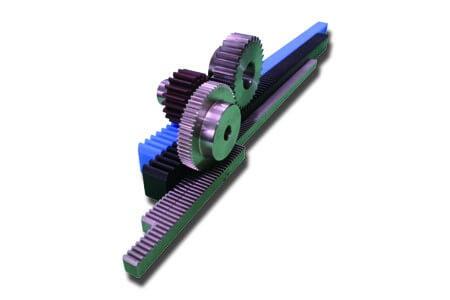5 Factors that Affect the Performance and Durability of the Gear Rack and Spur Gears

Gears are transmission
elements with teeth, and their main function is to transmit power and motion
between machine parts. Since they are widely used in various applications,
there are different designs and types in the market to meet different needs. The
suitability of a gear for a particular power transmission application relies on
the requirements of the application. Thus, when buying gear racks from gear rack distributors, you should keep
the following factors in mind that largely impact their durability,
performance, and efficiency.
1.
Operating and
Environmental Conditions
The
operating and environmental conditions play a great role in determining the
performance and durability of gears. Hence, they are the first thing to
consider when deciding the most suitable type and design of gears.
When it
comes to operating conditions that affect the performance of gear racks and
spur gears, one must consider the weight applied, the noise and vibration
produced, and the friction and stress endured by the teeth.
On the
other hand, environmental conditions that may affect the gear lifetime and
functioning include temperature, humidity, and sanitary conditions.
2.
Construction Material of
Gear Rack
A variety
of materials are used for the construction of gear racks and spur gears. Some
of these are cast iron, steel, stainless steel, nylon, and fiber.
The choice
of material is made based on the desired properties of the material and their
performance in the subjected operating and environmental conditions.
For
instance, for gears that don’t require high precision and need to be produced at
a low cost, cast iron is the most suitable material. However, if you want gears
that are highly durable and have high tensile strength and hardness, carbon
steel and alloy steel are suitable choices.
3.
Surface Treatment of Gear
Rack
Surface
treatments are performed for gear racks and spur gears for certain desired
results. The most common treatments are grinding and heat treatment. Grinding
the surface of gear teeth helps in reducing the noise during operation,
increasing the force to be transmitted, and influencing the accuracy of gear
classification. However, grinding leads to increased total production costs.
Apart from
grinding, there are also several other treatments, including case hardening,
annealing, normalizing, tempering, and carburizing. Each treatment imparts a
specific characteristic to the material of gear racks and affects their
performance and the overall durability of the gear.
4.
Lubrication of the Gear
Rack
When
lubrication is properly applied to the gear rack, it leads to reduced stress
and fatigue of the gear body. As a result, the overall life of a gear rack is
increased. The best type of lubrication method varies based on the requirements
of the application and the type of gear racks and spur gears.
Certain
characteristics of lubricants, such as viscosity, load pressure capability,
thermal and chemical stability, water separation, defoaming, and corrosion
resistance should be considered when selecting the lubricant for a gear rack.
5.
Pressure Angle of Gears
Pressure
angle is the factor that determines how a spur gear fits when it meshes with a
rack. Therefore, the pressure angle of gears must be the same.
When all
these factors lie in place in perfect harmony, the gear rack and spur gears are
bound to function smoothly and last longer.
Post Your Ad Here
Comments